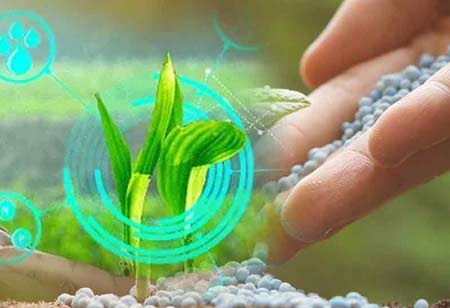Thank you for Subscribing to Agri Business Review Weekly Brief
Role Of Machine Learning in Agriculture
Machine learning (ML) plays a vital role in making agriculture more efficient and effective. Precision ag depends on the gathering, processing,

By
Agri Business Review | Monday, October 03, 2022
Stay ahead of the industry with exclusive feature stories on the top companies, expert insights and the latest news delivered straight to your inbox. Subscribe today.
ML applications can give farmers insights to make those decisions more effectively.
Fremont, CA: Machine learning (ML) plays a vital role in making agriculture more efficient and effective. Precision ag depends on the gathering, processing, and analyzing data for more efficient agricultural production. On the modern farm, you can gather data with the use of advanced technology, such as:
• autonomous vehicles,
• variable rate technology,
• sensors,
• cameras,
• robots,
• GPS-based soil sampling,
• automated hardware,
• telematics,
• software,
• drones,
• GPS guidance, and
• control systems.
Undoubtedly, according to ML, the equipment has brought the farming system to the next level of efficiency. This technology has enhanced crop productivity and improved real-time tracking, harvesting, processing, and marketing.
More about machine learning
The technological tools that fascinate the present and especially the future of agriculture would be much less exciting and revolutionary without ML or AI (artificial intelligence). AI is the technology that keeps the key to the huge leap agriculture requires to make if it will satisfy the world’s future food requirements.
The virtual assistant SIRI inside Apple products, or its equivalent, is an instance of machine learning already used in many daily lives. The ML or AI part enters when SIRI gathers and refines information based on your previous interaction with her. Then, SIRI will customize ongoing answers according to your personal preferences.
Similarly, agricultural ML gathers data and applies specific algorithms to determine awaited results. It can sift using vast amounts of data. In addition, machine learning can emulate certain human brain functions like pattern generation, cognition, learning, and decision-making.
Machine learning in agriculture can be applied to various areas with outstanding results, from detecting weeds and diseases, predicting the yield and quality of crops, gathering data, offering insights, and offering predictions about livestock production.
How does ML(machine learning) make farming more effective?
Precision agriculture is the target of every farmer. The combination of emerging technologies to reach this are on our doorstep, including ML and Internet of Things (IoT) hardware.
Experts await that the next big leap forward will be utilizing ML. But, most likely, it will never be able to replace the farmer. Still, farm owners make complex decisions daily, and ML applications can provide farmers with insights to make those decisions more effectively.
Today’s farmers can access plenty of data—more data than they can handle without the support of machine learning technology. ML can analyze tons of data quickly. Then, based on that information, it can suggest a certain strategy. For instance, it could suggest the best time to plant to avoid pests and diseases.
The advantages of digital farming are tangible; it can help growers to choose the right inputs to optimize yield and profit. Moreover, it can help growers to understand actual costs on a field-by-field level, not only on a farm-wide basis.
Instances of using ML(machine learning) in agriculture
Some instances of how the agricultural industry is utilizing and can use ML:
Robots – Hyper-efficient AI harvesting bots can substitute human workers in the agricultural sector and reduce labor costs. They can also support farmers in protecting their crops by keeping track of and spraying weeds.
Watering – Farmers utilize AI to monitor growing areas for crop humidity, soil composition, and temperature. This AI use increases yields due to optimization of water and fertilizer use.
Resource management – AI can aid farmers in saving energy, reducing pesticides, and reducing time to market.
Enhancement of nitrogen in the soil – Nitrogen is a vital nutrient for plant growth. Although nitrogen is common in the ground and the atmosphere, plants can merely use a very small portion of the nitrogen in the soil. Farmers can hold these inorganic nitrogen levels at optimum levels with the support of machine learning technology.
Nitrogen modeling forecasts the nitrogen cycle in the atmosphere and soil, guiding farmers to optimum levels. Simulation software can check nitrogen accessibility and calculate when to add nitrogen to the soil. But conversely, it can also alert the farmer to excessive nitrogen, which can poison the crops.
Species breeding – Species assortment is a painstaking task comprising searching for specific genes that will guarantee effective responsiveness to water and nutrients. Ideal plant species will cope with climate variation, be resistant to disease, have higher nutritional content, and taste better.
Machine learning enables us to draw from decades of field data for detailed crop performance analysis. A probability model from this data forecasts which genes will contribute a sought-after genetic gain to a plant.
Species recognition – Customarily, plant classification has been done by basic comparisons like the color and the shape of the leaves. Machine learning allows much more complex, accurate, and faster plant analysis using more sophisticated techniques like analyzing leaf vein morphology.
Even though ML-driven farms are in their infancy, these few examples suggest that they are already evolving into factories run by machine learning. Currently, machine learning solutions in agriculture tend to deal with individual problems.
In the future, though, the present agricultural revolution will be in full swing with further integration of data capture and analysis, machine learning, and incorporating decision-making into an interconnected system.





